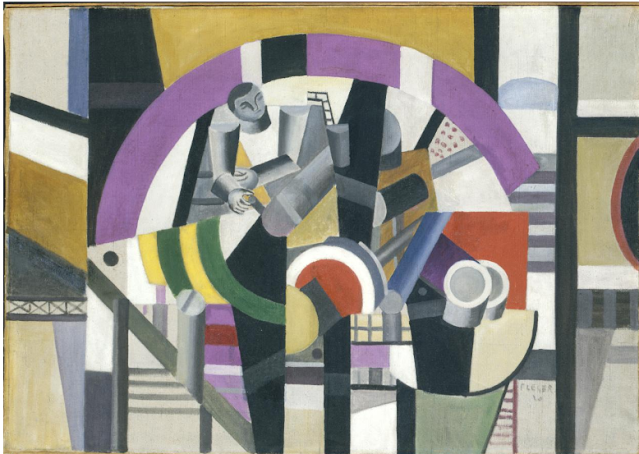Charles Demuth, "Roofs and Steeple"
I love to mix-up the selections on this blog, so today I am tossing out a drawing and watercolor. Charles Demuth (1883-1935) is the artist. He was an American, living most of his life in Lancaster, Pennslyania where he drew on the city's architectural forms for much of his subject matter. But he also traveled, especially to Paris and New York where he discovered the new movement, cubism. He did not wholly adopt the style but rather adapted it to create his own version.
Roofs and Steeple is primarily handled as a drawing. But it makes no difference. As a two dimensional statement, the guidelines of composition still apply. So here we have an interesting arrangement of line and shape where the primary focus is directed at the exact middle, and almost completely surrounded by unused space, bare paper. But this "unused" space is equally as important as the subject, and the artist must take it into consideration when executing the overall design.
The process of using graphite and watercolor is quite different from oil painting. Graphite is a pencil and they come in a range of hardness. Soft graphite produces a softer line, so it can be smeared and blended. A hard pencil is best for sharp lines using a ruler. In this work we can see the use of both. Demuth also used a wash, which is an ink or watercolor diluted to a degree and applied with a brush. Washes can be difficult to control, and we can tell by the precision in this image, that Demuth was a master at it.
This is a monochromatic image. The value ranges are particularly well done, delighting the eye, wanting us to visually inspect all areas and corners. The tilt of the subject suggests a bridge to me, but the title labels a steeple, and we also have other architectural forms suggesting a city.
Roofs and Steeple was created in1921. It measures 14 3/8 by 10 7/16 inches. It is a watercolor and graphite on textured woven paper and is part of the permanent collection of the Brooklyn Museum, New York.
Make Art a part of your life, it's a beautiful thing to do.




I like his adaptations of Cubism. My first thought is - why did he paint it at a slant? It does increase tension and interest. He also gives the viewer an opportunity to imagine and interpret all the little details. The unfinished lines on the right side have my curiosity. My favorite brush stroke is the darkest curved line in the middle right!! It seems like the two dark lines in the bottom half, support the whole painting. I do remember us studying his "No. 5", and admire the creative thinking that goes into his compositions. I believe he had a creative life style too.
ReplyDelete